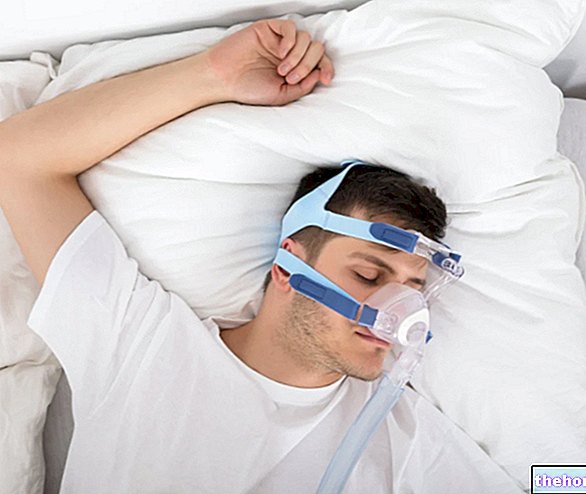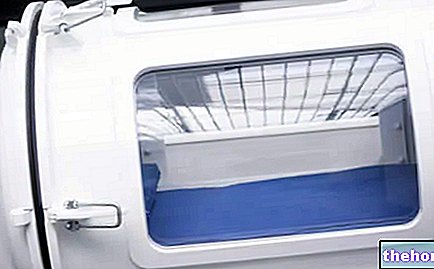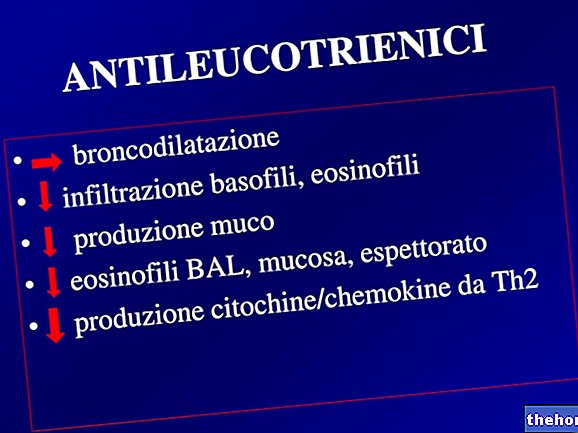Generality
Vasomotor rhinitis, or non-allergic rhinitis, is a particular form of rhinitis, which arises as a result of excessive dilation of the blood vessels of the nasal mucosa. This vasodilation involves an accumulation of blood and fluids in the cavities of the nose, which is a cause of irritation and inflammation of the nasal mucosa.

The following are essential for a correct diagnosis: physical examination, anamnesis and allergy tests.
The treatment of vasomotor rhinitis involves, first of all, the elimination from everyday life of everything that can favor the dilation of the blood vessels of the nasal mucosa.
Medical significance
Rhinitis is the medical term for any irritative and inflammatory process affecting the nasal mucosa.
Highly vascularized, the nasal mucosa is the mucus-secreting epithelium that lines and moistens the nasal cavities.
The classic symptoms of a rhinitis are: stuffy nose, runny nose, repeated sneezing, postnasal drip (or discharge) and nasal voice.
- Heats and humidifies the air entering the nose;
- It traps the harmful (or in any case foreign) substances that could be found in the air entering the nose;
- It supports the sense of smell, as it has connections with the first cranial nerve (or olfactory nerve).
What is vasomotor rhinitis?
Vasomotor rhinitis, or non-allergic rhinitis, is the irritative and inflammatory process affecting the nasal mucosa, which is certainly not due to either an allergy (allergic rhinitis) or an infectious disease (infectious rhinitis).
Causes
At the present time, the precise causes of vasomotor rhinitis are unclear.
According to the most accredited medical theories, the inflammatory process that characterizes non-allergic rhinitis would be initiated by an excessive dilation of the blood vessels of the nasal mucosa and the consequent accumulation, in the nasal cavities covered by the latter, of large quantities of blood and fluids. .
On the basis of various scientific studies, some of the main factors that would seem capable of favoring the aforementioned vasodilation process in circumstances that are still poorly understood are:
- The high temperature, sudden changes in temperature, high humidity, exposure to toxic fumes (eg cigarette smoke), spicy foods, too hot foods, stress, alcoholic substances, intense perfumes, etc. All these factors are labeled with the term environmental factors;
- Hormonal imbalances, which characterize particular moments in the life of a human being, such as pregnancy (exclusively for women) or puberty;
- Hormonal therapies or hormonal contraceptives;
- Particular pharmacological substances, including: some NSAIDs (eg: ibuprofen or aspirin), beta-blockers, ACE inhibitors (or inhibitors of the angiotensin converting enzyme), nasal decongestants in the form of sprays (in these situations , we speak of medicamentous rhinitis), drugs for the treatment of erectile dysfunction and some tranquilizers (eg benzodiazepines);
- The presence of damage to the turbinates or the absence of the latter, for example due to surgical removal. The turbinates are specific areas of the nasal cavity, made up of tissues that have the task of humidifying the inside of the nose and preventing the entry into the body of bacterial agents and other potentially dangerous microorganisms.
Vasomotor rhinitis, which depends on damage to the turbinates or their absence, is also called atrophic rhinitis; - Intense physical exercise;
- Strong emotions;
- Sexual arousal.
It is important to point out that, in some cases, vasomotor rhinitis appears without the occurrence of any of the aforementioned circumstances; in other words, it appears for inexplicable reasons. In these situations, doctors describe the inflammatory condition as an idiopathic disorder (idiopathic vasomotor rhinitis).
Meaning of idiopathic
The term idiopathic, associated with the name of a pathology, indicates that the latter has arisen for unknown or unidentifiable reasons.
EPIDEMILOGY
Interesting statistical studies conducted in the United States have shown that vasomotor rhinitis affects about 17 million inhabitants and affects the 20-year-olds with a particular predilection.
MIXED RHINITE: WHAT IS IT?
Vasomotor rhinitis can sometimes occur in association with allergic rhinitis. The condition deriving from the association between vasomotor rhinitis and allergic rhinitis takes the specific name of "mixed rhinitis".
Symptoms and Complications
In addition to causing stuffy nose, runny nose, sneezing, post nasal discharge and nasal voice, vasomotor rhinitis is also responsible for:
- Moderate irritation and discomfort in and around the nose
- Reduced sense of smell (anosmia);
- Formation of one or more scabs inside the nasal passages. These scabs can be responsible for a bad smell coming out of the nose and for bleeding (if you try to remove them);
- Snoring
- Halitosis.
COMPLICATIONS
If particularly severe or if not treated properly, vasomotor rhinitis can lead to various complications, including: sleep disturbances, daytime sleepiness, irritability, concentration problems, nasal polyps, sinusitis and infections affecting the " middle ear.
WHEN TO SEE THE DOCTOR?
An individual with all the typical symptoms of vasomotor rhinitis should contact their doctor when the aforementioned symptoms strongly affect the quality of life.
Diagnosis
From the point of view of symptoms, vasomotor rhinitis is very similar to allergic rhinitis and this makes it difficult to correctly identify both.
In general, in order to diagnose a case of vasomotor rhinitis and not to confuse it with a case of allergic rhinitis, a thorough physical examination, a careful medical history and a series of allergic tests are necessary.
The use of a nasal swab is a "further diagnostic solution, which doctors take into consideration only when there is a suspicion of infectious rhinitis."
Knowing precisely the type of rhinitis in progress is essential for planning the most appropriate therapy.
OBJECTIVE EXAMINATION AND HISTORY
Thanks to a careful physical examination and a "careful history, doctors are able to understand if there" is some particular circumstance, or some particular factor, at the origin of the symptoms that suggest a form of rhinitis.
ALLERGIC TESTS: HOW TO INTERPRET THEM?
Allergy tests include skin tests and blood tests.
A positive response to allergic tests is indicative of allergic rhinitis; a negative answer, on the other hand, indicates a vasomotor or infectious rhinitis.
Treatment
Typically, the treatment of vasomotor rhinitis involves:
- A series of attentions aimed at avoiding direct contact with those factors that seem to favor the dilation of the blood vessels of the nasal mucosa and the consequent inflammatory process. This is clearly possible in all those cases in which vasomotor rhinitis is not idiopathic;
- Nasal washes with saline solutions. They are used to cleanse the nasal cavities of excess mucus and irritants. In addition to reducing the inflammatory state, they are a source of relief;
- The use of corticosteroid nasal sprays. Corticosteroids are powerful anti-inflammatory drugs, which are medicines that reduce inflammation. Their prolonged use can lead to various side effects, therefore it is good to take them only after medical prescription;
- The use of anticholinergic nasal sprays. They limit the production of mucus inside the nasal cavities, thus relieving the symptom known as a runny nose;
- The use of decongestant nasal sprays. They reduce the excessive dilation of the blood vessels of the nasal mucosa.
WASHING WITH SALINE SOLUTION
Preparing saline solutions for nose washing is quite simple and patients can do it from home as well. In fact, it is sufficient that they mix, in a solution of water, a teaspoon of salt and a teaspoon of sodium bicarbonate and heat everything, taking care to use the preparation at body temperature.
To apply the solution, there are three main steps:
- In front of a sink, stand up, make one hand take the shape of a goblet and pour a little of the saline solution into it;
- "Pull up" the saline solution, aspirating it with one nostril at a time. If you are unable to aspirate the solution with your nose, you can resort to the use of a syringe;
- Repeat the aspiration until you feel a sense of well-being. Sometimes a small amount of saline solution may be enough, so it is not necessary to consume all the preparation.
Prognosis
The prognosis in case of vasomotor rhinitis depends on at least two factors: the severity of the symptoms and the attention that the patient pays to avoid certain agents triggering the symptoms (if any).
In most cases, careful and timely treatment leads to complete recovery; on the other hand, late and possibly non-continuous therapy is quite frequently associated with the onset of complications.
Prevention
As long as the triggering causes are not clear, talking about the prevention of vasomotor rhinitis is impossible.























-nelle-carni-di-maiale.jpg)




